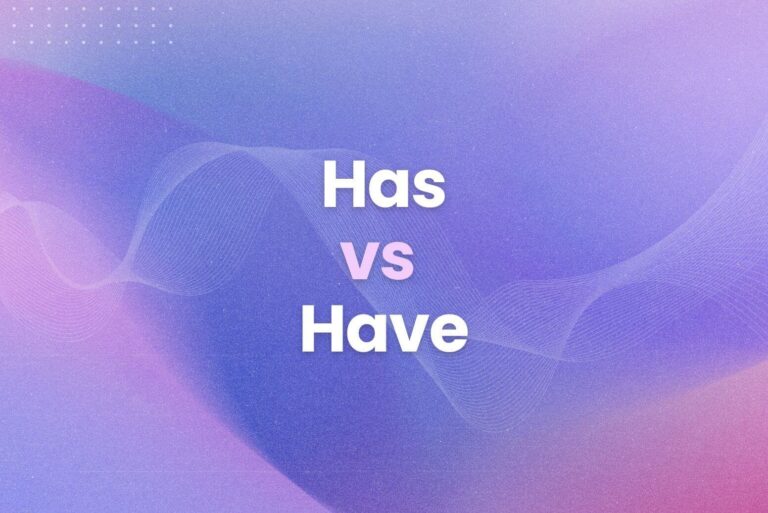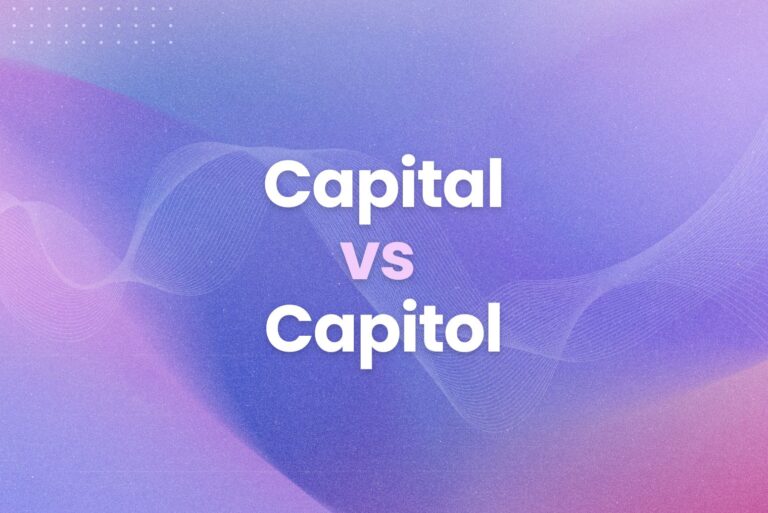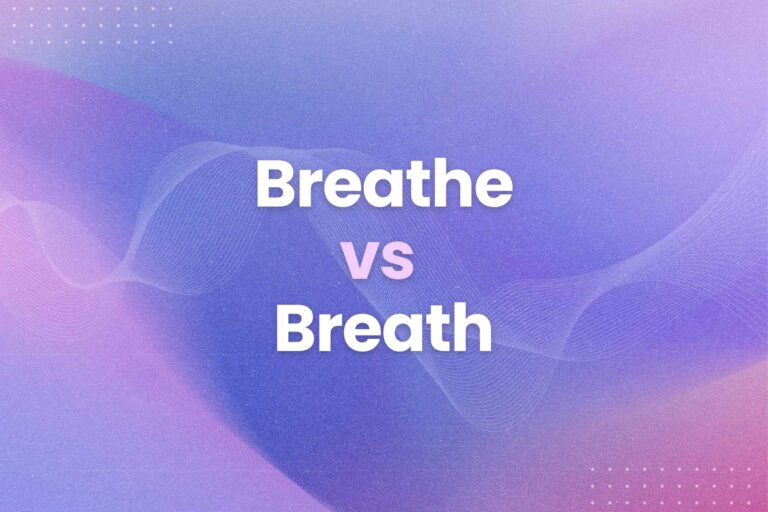Light vs Lite: When to Use Each Word (Grammar Rules Explained)
Ever wonder if you’re using “Light vs Lite” correctly? These two words often cause confusion, but knowing the difference is key to clear writing. We’ll clear up the mystery once and for all.
This article breaks down the proper usage of “light” and “lite.” We’ll cover everything you need to know, from basic definitions to practical examples. So, you can confidently choose the right word every time.
Here’s what we’ll cover:
- First of all, the core difference between light vs lite.
- Secondly, grammar rules that govern their use.
- Also, examples of correct and incorrect usage.
- Lastly, tips for remembering the distinction.
Let’s find out.
The Core Difference Between Light vs Lite
The primary difference between light vs lite lies in their function. “Light” is the original, standard spelling. It can function as a noun, verb, adjective, or adverb. “Lite,” on the other hand, is a variant spelling of “light” and you can only use it as an adjective. Think of “lite” as a shortcut. It’s a way to make “light” shorter when describing certain products.
For example, you might say, “The room was filled with light” (noun). Or, “Please light the candle” (verb). You could even say, “She ran lightly through the field” (adverb). But, you’d never say, “This room is lite.” You’d say, “This room is light.”
“Lite,” you can almost exclusively use in marketing or branding. It often suggests a lower calorie, lower fat, or otherwise lighter version of a product. For instance, you’ll see “lite” beer or “lite” salad dressing. This usage is informal, almost like slang. It’s a way to signal to the consumer that the product is a light version.
So, while both words relate to illumination or weight, their grammatical roles are distinct. “Light” is a versatile, all-purpose word. “Lite” is a specialized adjective primarily you can use in marketing to denote a lighter version. Using them correctly demonstrates attention to detail in your writing. And, clear writing builds trust with your audience.
Grammar Rules That Govern Their Use
Now, let’s get into the specifics of grammar. Understanding these rules will solidify your grasp of “light” vs. “lite.” As we discussed, “light” has a wide range of grammatical functions. “Lite” is exclusively an adjective.
Here’s a breakdown:
- (Noun) Light: Refers to illumination, a source of light (like a lamp), or even a mental state (e.g., “the light of understanding”). Example: “The light from the moon was beautiful.”
- (Verb) Light: Means to ignite or illuminate. Example: “He used a match to light the campfire.”
- Light (Adjective): Describes something that isn’t heavy, bright, or pale. Example: “She wore a light jacket.” Or, “The room was painted a light blue.”
- (Adverb) Light: Used to modify a verb, adjective, or another adverb, indicating a gentle or slight degree. Example: “It rained lightly all day.”
- (Adjective) Lite: You can use it only to describe something that is a less heavy or intense version of a product. This is almost always in a marketing context. Example: “This is a lite version of the original recipe.”
A helpful way to remember this is to think of “lite” as a shortcut for the adjective form of “light” when referring to a product. It’s a branding tool. Therefore, you’ll rarely, if ever, see it used in formal writing outside of product names. Using the correct form enhances your credibility. It shows you know the nuances of the language.
For instance, you’d say, “This shirt is light,” not “This shirt is lite.” The only time you’d see “lite” with clothing is if it were part of a brand name or product line, like “SportLite” clothing. This consistency is key to clear communication.
Examples of Correct and Incorrect Usage
Seeing light vs lite in action clarifies their proper use. Here are some examples that illustrate the difference:
Correct:
- “The light from the sun was blinding.” (Noun)
- “Please light the candles.” (Verb)
- “She wore a light dress.” (Adjective)
- “He ran lightly down the street.” (Adverb)
- “This is a lite beer.” (Adjective, marketing context)
- “I prefer the lite version of this snack.” (Adjective, marketing context)
Incorrect:
- “The room was too lite.” (Should be “light”)
- “He lited the fire.” (Should be “lit”)
- “She felt lite on her feet.” (Should be “light”)
- “The rain fell litely.” (Should be “lightly”)
- “This light beer is great.” (While not strictly wrong grammatically, using “lite” is the industry standard and expected by consumers in this specific context)
Notice how all the incorrect examples use “lite” when another form of “light” is needed. This is the most common mistake. Remember, “lite” is only an adjective used in a specific way. Sticking to these rules will make your writing more precise. And, it will prevent misunderstandings.
Think of it this way: “Lite” is a special case. It’s a lite version of the word “light,” used only in certain light (adjective) situations. If you’re unsure, using “light” in its various forms is almost always the safest bet. For extra assurance, you can always check your work with Arvin. Arvin’s grammar check feature can quickly identify if you’ve used “light” or “lite” correctly in any context.
Tips for Remembering the Distinction
Keeping “light” and “lite” straight can seem tricky at first. But, with a few helpful tricks, you’ll master their usage in no time. Here are some tips to solidify the difference:
- Think “Lite” = Marketing: Associate “lite” primarily with product marketing. This will help you remember its specific, adjective-only role. If you’re describing a product’s lighter version, “lite” is likely correct.
- “Light” is Your Go-To: When in doubt, use “light.” It covers a broader range of grammatical functions. Unless you’re specifically referring to a lite product, “light” is usually the safer choice.
- Grammatical Roles: Review the different grammatical roles of “light” (noun, verb, adjective, adverb). This will reinforce its versatility and help you avoid mistakenly using “lite” in its place.
- Real-World Examples: Pay attention to how these words are used in everyday life. Notice “lite” used for lite beer or lite snacks. This reinforces the marketing connection. Likewise, notice how “light” is used in other contexts.
By using these strategies, you’ll internalize the difference between light vs lite. Consequently, your writing will become more accurate and polished. And, you’ll project an image of professionalism and attention to detail.
Light vs Lite: Arvin Can Help You Shine
We’ve covered the key differences between light vs lite, from their grammatical roles to practical usage. Now you can confidently choose the correct word, avoiding common pitfalls and ensuring clear communication.
Remember these key takeaways:
- Firstly, “light” is the original spelling and has multiple grammatical functions.
- Secondly, “lite” is a variant spelling only used as an adjective, mainly in marketing.
- Also, “lite” often indicates a lighter version of a product.
- Lastly, When unsure, “light” is usually the safest choice.
Clear writing is essential for effective communication. Just like knowing the difference between “light” and “lite” enhances your writing, using the right tools can make the process even easier. Arvin, the AI-powered browser extension, is your grammar companion. It can instantly check your writing for errors, including the proper use of “light” and “lite,” ensuring your message is always clear and light (adjective) on confusion.
FAQs
Which is correct, lite or light?
Both are correct, but in different contexts. “Light” is the standard spelling and has multiple grammatical functions (noun, verb, adjective, adverb). “Lite” is a variant spelling only used as an adjective, mostly in marketing to indicate a lighter version of a product.
Is lite the same as light?
No, “lite” is not the same as “light,” though they are related. “Lite” is a specialized, adjective-only form of “light.” While both relate to illumination or weight, they have distinct uses. “Light” is a versatile word, while “lite” has a more limited role.
Is it lite or light in weight?
It’s “light” in weight. “Lite” is only used when referring to a product marketed as having fewer calories, less fat, or being a lighter version. When describing the physical weight of something, “light” is always correct.
Is it lite or light breakfast?
It depends! If you’re referring to a breakfast that is low in calories or a lighter version of a typical breakfast, you might see it marketed as a “lite” breakfast. However, if you’re simply describing a breakfast that isn’t heavy or large, “light” breakfast is the more general and widely applicable term.





